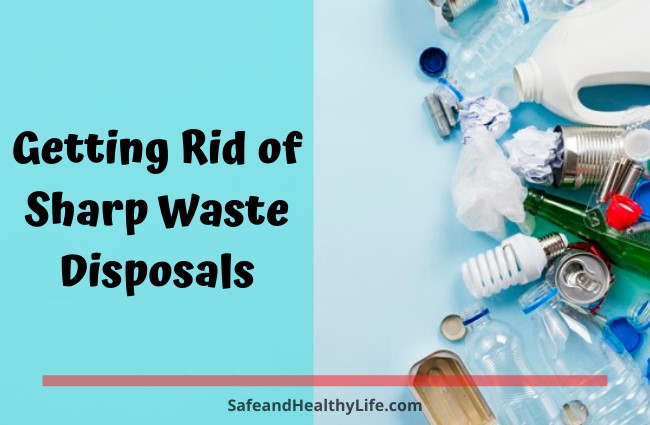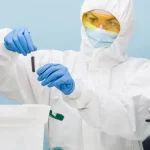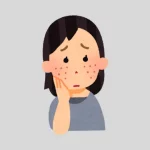
Sharp devices are objects that have corners, sharp edges that can cut or pierce one’s skin.
Most countries usually have their laws that control the discarding of sharps waste to protect the disposers from any physical, dangerous, or contagious menaces.
The sharp objects include hypodermic needles, musicians, syringes, blades, and even blunted needles.
Sharp disposals like plastics and glass that could pierce a bag should be kept in an accommodating and safe container.
The waste needs to be segmented and there are 4 different types of sharp wastes are:
- Non-contaminated (but for things like needles, syringes, and lancets)
- Biohazardous (This waste type includes non-contaminated needles, syringes, and lancets)
- Waste that is chemically contaminated
- And finally radioactive
It does not matter if the waste is infectious or not but detailed packaging and container limitations do apply. Here are specific dumping techniques below:
Non-contaminated
To dispose of non-contaminated waste, the sharps have to be biohazard, chemical, or radioactive free of any sort of infection.
Dealing with non-contaminated dirt
For the containers, select a strong, one which won’t leak or easily tear when it comes in contact with sharp objects.
Have the containers labeled showing non-dangerous for easy identification.
Storage and use
- Keep the container just beside the area where the sharp waste is produced
- Make sure the sharp objects are well arranged in an organized manner in the container
- Free liquids like full syringes should not be placed in sharp containers.
For disposal
For any disposals, enable them to carefully close a full tape so it cannot be easily accessed or even opened. This makes managing sharps waste easy.
Biohazardous contaminated waste
To store biohazardous contaminated dirt, it is important to use containers that are hard to destroy that are very solid.
Most of these types of managing sharps waste storage containers are being sold in the market.
When storing the waste, do not place free liquids like full syringes or even other sharp wastes in the containers and do not exceed the “fill” line.
To dispose of the sharp containers full of sharps waste, the waste has to be stored strictly the health facilities’ waste collection area and have it well stored for proper disposal.
The hospital usually equates strict disposal rules for the waste.
| Read also: 4 Important Benefits of Proper Waste Disposal |
Chemically contaminated sharp wastes
The sharp wastes have just chemical infections and no infectious toxins. The best storage containers have to be strong with no possibility of leakage. It also has to be resistant to piercing.
Staffs equally need to label the storage container with the infectious waste tag and choose the chemical waste with an indication the storage will as well contain sharp wastes products. The biohazard label tag should be the only symbol on the container.
The waste container must be stored where the waste is produced and has to be void of liquids and syringes.
The disposables need to be stored in an organized manner and should not be overly full above the brim.
Once the container is full, the hazardous waste collection and management team need to properly get rid of the waste to ensure the environment is well cleaned.
Radioactive sharp waste disposals
Radioactive sharp waste disposal is infected with radioactive resources. They can also have infections from chemicals but first things first; they have to be treated as radioactive waste.
Storing things which are radioactive infected need containers that are quite solid with no traces of any leakages and strong enough to resist piercings from sharp objects and the container has to be labeled with a dangerous waste tag with the following essential data.
- There is a need to mention the type of Isotope used
- State if there are any extra chemicals or biological hazards
- How it was deactivated or disinfected needs to be mentioned as well should in case one was used.
- Have the container labeled as “other” and write SHARPS on the tag
The container needs to be stored where the waste is produced and anything used in that environment has to be disinfected.
It is essential to note that isotopes may have a funny reaction with particular disinfectants. For example, it is not advisable to bleach isotopes of iodine.
Free liquids like syringes are not supposed to be stored in these sharp containers as well and the storage limit of the container should not be exceeded as well.
Once the container is full, enable to have it well sealed and carried forward to the health facility waste area.
Storage guidelines to use where appropriate
- Enable to safeguard sharps using a magnet
- Razor blades should be stored in a petri dish and needles put in cork and make sure not to reuse the needles.
- Sharp objects should not be placed on benches and infectious things should be disinfected. The waste should not exceed the fill line and free liquids like filled syringes in containers that have been filled to the brim.
About The Author:
This is Kevin, a full-time professional blogger. He loves to travel and try new food, surfing, and definitely a music addict. He also loves to write on trending ideas on various topics that prove helpful to others with their personal and business works.




